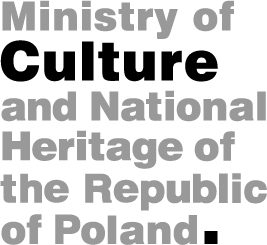|
|
traces of memory Włodzimierz Fiszer page 3 A large number of various road signs makes orientation during travelling easy, eliminating any possibility of losing one's way. A consecutive stage of our excursion is a rather small and neat but pretentious Town of Neidenburg. The view of its main street, leading to the market place, presents a sight which to us, travellers who are here in "Hitlerland" for the first time, an unforgettable impression, making us feel in a specific way, impossible to describe. Now, troops are marching in battle array along pavements, one after one, young storm troopers in close columns – Nazi youth in dark brown shirts. Actually, the shirts are not dark brown but have the colour of pale brick, so their hue is reddish-yellow and their trousers "galife" are a bit darker and usually made of thicker material; high boots are on their feet. Their caps – round, of cylindrical shape with a rim in a French-like style, have the colour of shirts and their rim along the top edge is red, plus a strap and Nazi badge. They have a band on their arms in red colour with a white shield and swastika in its centre. The troops are not going in pairs or fours but in trees. Impeccable order. Exemplary discipline. We are driving past them and reach a large, rectangular square in the centre of which stands a slim silhouette of a monument to German heroes, fallen in the World War. The monument features a huge figure of a German soldier with full fighting kit, an iron storm helmet, topped with a pike; his right hand is up and wields a banner, while crossed bayonets and other broken items of armament – symbols of fight – lie at his feet. [In] Nieidenburg, we take a half-an-hour long break. This permits us to have an only quick glance at the external looks of the town, some shop displays and a possible page 4 visit to a near state-of-the-art restaurant, which I promptly did. As for the "mood" of the street itself it is, I would say, somewhat stiff. You cannot notice any symptoms of outward joy or merriment or, even, this boosted mood of pulsating life which characterises holidays. The public promenades slowly and solemnly along pavements as if yielding to the discipline kept here by Führer-Hitler's hand – invisible but omnipresent. The atmosphere of subordination floating everywhere around and the external consolidation of the entire German society in the spirit of loyalty to Hitler is probably the most important premise to the characteristic made on observation of the life of a today's Prussian town. One can sense some regret suspended in the air, some sort of harm asking for revenge which seems to be symbolised by the figure of Hitler, despite his "peaceful predisposition". The whole life here is tuned to a bellicose tone – from youth organised in troops, clad in uniforms and numbered, to shop windows, featuring images from the war, illustrating the heroic freedom of Germany, among then being the picture of Sarajevo incident. One can see rows of luxury editions of books bout the feats of German submarines, Germany land army and, finally, Zeppelins. There are also children toys as figures of soldiers – all of them in Hitlerist mode, including women's Nazi troops among them. The programme of the cinema-theatre here, by the way having no name, also includes a Nazi propaganda war film, based on a famous but biased book by a German author "Horst am Wessel", showing a story from German life in 1929. One of the photos from this film depicts a gathering of some communist get-together, debating in a room with page 5 a huge affiche with rows of (illegible) ...in various languages, with a line in absolutely correct Russian: „Да здравствует комсомол франции”. Meanwhile, a parade of the Union of War-Veterans from the World War was formed in front of a representative building. Army troops in dark brown uniforms and caps in a shape similar to Russian – only with the back side of its top is also raised up – marched across the market place, with an orchestra in front with a rather bizarre-shaped signum with bells was carried. From time to time a brown automobile would drive into the market place, and various Nazi leaders, also in dark brown shirts, would get off it to get inside of the representative building. Having watched the street and its life, I entered into a restaurant where one can by some refreshment and/ or beer for German marks, which a rather elderly and plump lady offered to her guests. If you do not have German marks, you can only smoke a cigarette which you have on you or play skat, the latter entertainment being enthusiastically started by a group of Polish excursion makers, and among German guests there were also quiet a few willing to play. (In) the restaurant room a huge photograph, measuring 3/4 of a regular man's height, was exposed in the most visible play, it showed Hitler, slightly bend, his hand rested on a knee of the leg, supported by a high object, his garment – plain, shirt tightened with a string and a military belt. Some of our Polish men took German marks before leaving Poland, so they went on a "town stroll" to investigate into an alleged truth that the strongest vodka one can get in Prussia has 30%, anything stronger available only on a physician's prescription. One of my excursion companions was extremely nice (Sic!) |

|
|||
| |||||
